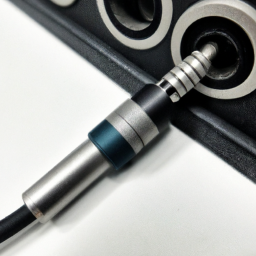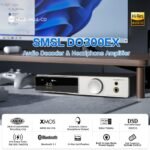In this article, we will delve into the world of audiophile headphones and explore the importance of selecting the correct impedance for your listening experience. Understanding impedance can be confusing, but fear not; by the end of this article, you’ll have all the knowledge you need to make an informed decision. So please sit back, relax, and dive into the fascinating world of headphone impedance together!
Understanding Impedance
What is impedance?
Impedance measures the opposition or resistance an electrical circuit presents to the flow of alternating current (AC). In the context of audiophile headphones, impedance refers to the electrical resistance the headphones exhibit when connected to an audio source.
Why is impedance important in audiophile headphones?
Impedance plays a crucial role in determining how well headphones perform and how they interact with different audio sources. It affects headphone performance, including sound quality, power requirements, and amplifier compatibility.
How does impedance affect headphone performance?
The impedance of headphones directly affects the amount of power required to deliver a certain volume level. Higher-impedance headphones typically require more energy to achieve the same volume level as lower-impedance headphones. Additionally, the impedance of headphones can impact the frequency response, damping factor, and overall sound signature.
Factors to Consider
Headphone sensitivity
Headphone sensitivity refers to how loud the headphones can get with a given amount of power. It is usually measured in decibels (dB) and is essential when choosing the correct impedance. Highly sensitive headphones can deliver louder volumes with less power, making them suitable for portable audio devices such as smartphones or MP3 players. On the other hand, headphones with lower sensitivity may require more energy to reach the same volume levels, making them better suited for use with dedicated amplifiers.
Audio source output impedance
The output impedance of the audio source can significantly impact the performance of headphones. When the headphones’ impedance is mismatched with the output impedance of the source, it can result in frequency response deviations and lower overall sound quality. It is generally recommended to choose headphones with an impedance at least eight times lower than the output impedance of the audio source for optimal performance.
Listening preferences
Your personal listening preferences also play a role in determining the proper impedance for your audiophile headphones. Different headphones with varying impedance values can produce different sound signatures, emphasizing specific frequencies or characteristics. Understanding your preferred sound profile, whether bass-heavy or neutral, can help you choose the impedance that suits your listening preferences.
Matching Impedance with Audio Source
Why is matching impedance necessary?
Matching your headphones’ impedance with the audio source’s output impedance is crucial to achieving the best sound quality. A mismatched impedance can result in frequency response irregularities, distorted sound, and potential damage to the audio equipment.
Impedance matching for different audio sources
When using headphones with low impedance, such as those below 50 ohms, they are generally compatible with most portable audio devices like smartphones, tablets, and portable music players. Higher impedance headphones, typically above 50 ohms, are better suited for dedicated headphone amplifiers or Hi-Fi systems.
Benefits of matching impedance
By matching the impedance of your headphones’ impedance with the audio source’s output impedance, you can ensure a more accurate and balanced sound reproduction. It helps preserve the audio signal’s integrity and maintain the desired frequency response, resulting in a more enjoyable and immersive listening experience.
Low Impedance vs. High Impedance
Advantages and disadvantages of low-impedance headphones
Low-impedance headphones, typically 8 to 32 ohms, have several advantages. They are easier to drive and can be used with audio sources, including portable devices. They generally require less power to achieve the desired volume level and are more efficient in power consumption. However, they may exhibit higher distortion levels and have a slightly limited soundstage compared to high-impedance headphones.
Advantages and disadvantages of high-impedance headphones
High-impedance headphones, usually above 100 ohms, offer their own set of advantages. They deliver superior audio quality, with better dynamics and a wider soundstage. High-impedance headphones often require dedicated amplifiers for optimal performance and are more common among audiophiles and professional audio enthusiasts. However, they may not be as portable-friendly as low-impedance headphones, requiring more power to reach satisfying volume levels.
Choosing between low and high-impedance
When choosing between low and high-impedance headphones, it is essential to consider your listening environment, audio source, and personal preferences. Low-impedance headphones are a more practical choice if you primarily use portable devices and require headphones for on-the-go listening. On the other hand, if you have a dedicated listening setup and appreciate the finest audio quality, high-impedance headphones paired with a suitable amplifier would be the way to go.
Headphone Sensitivity and Efficiency
Understanding headphone sensitivity
Headphone sensitivity refers to how efficiently the headphones convert an electrical signal into sound. It is measured in decibels of sound pressure level (dB SPL) per milliwatt (mW) of input power. Higher-sensitivity headphones require less energy to produce the same volume level as headphones with lower sensitivity.
How does sensitivity impact sound quality?
Higher-sensitivity headphones can deliver louder volumes with less power, making them more adaptable to a wide range of audio sources. However, high-sensitivity headphones can be more susceptible to background noise or hiss. On the other hand, lower-sensitivity headphones may require more power to reach higher volumes, but they can often offer better control and lower distortion levels.
Balancing sensitivity and impedance
When choosing the correct impedance for your audiophile headphones, it is crucial to consider the balance between sensitivity and impedance. A high sensitivity paired with a low impedance can result in greater efficiency and compatibility with a broader range of audio sources. Conversely, lower sensitivity and high impedance may require more power but can offer better control and potentially improved sound quality.
Listening Preferences and Music Genre
Different impedance for different music genres
Different music genres can benefit from different headphone impedance values. For example, bass-heavy music genres may benefit from headphones with lower impedance, as they tend to have a more dynamic and impactful bass response. On the other hand, genres that rely on precise instrument separation and tonal accuracy, such as classical music, may benefit from high-impedance headphones for better detail retrieval and imaging.
Choosing impedance based on the preferred sound signature
Your preferred sound signature plays a significant role in determining the correct impedance for your audiophile headphones. If you enjoy a neutral and balanced sound, headphones with moderate impedance values can reproduce accurately and faithfully. However, if you prefer a more bass-emphasized or treble-focused sound, headphones with lower or higher impedance, respectively, may be more suitable.
Tailoring impedance to personal preferences
Ultimately, choosing the suitable impedance for your audiophile headphones comes down to personal preference. Experimenting with different impedance values can help you find the perfect match for your preferred sound signature, music genres, and listening environment. It is essential to consider the other factors mentioned earlier, including headphone sensitivity and audio source compatibility, to achieve the desired audio experience.
Power Requirements
Power requirements for low-impedance headphones
Low-impedance headphones, typically below 50 ohms, generally have lower power requirements than high-impedance headphones. They can be driven easily by portable devices such as smartphones and tablets, making them ideal for on-the-go listening. However, it is still essential to ensure that the output power of your audio source is sufficient to drive the headphones to their full potential.
Power requirements for high-impedance headphones
High-impedance headphones, typically above 100 ohms, require more power to deliver the desired volume level. They are often used with dedicated headphone amplifiers or Hi-Fi systems to ensure optimal performance. Investing in a powerful amplifier that can provide the necessary power is crucial to fully enjoy the benefits of high-impedance headphones.
Matching power output with headphone impedance
To achieve the best performance, it is essential to match the power output of the audio source or amplifier with the impedance of the headphones. This ensures the headphones have sufficient power to deliver the desired volume levels without distortion or clipping. It is essential to consider the power specifications of both the audio source and the headphones to ensure they are compatible.
Amplifiers and Impedance
How do amplifiers affect impedance?
Amplifiers are critical in driving headphones and can significantly impact their impedance characteristics. Different amplifiers have varying output impedance levels, which can affect the headphones’ frequency response and overall sound quality. It is generally recommended to use an amplifier with low output impedance to minimize the chances of impedance mismatch and associated audio problems.
Matching headphone impedance with amplifier impedance
Matching the headphones’ impedance with the amplifier’s output impedance is important to achieve optimal audio performance. When the headphone impedance is significantly higher than the amplifier’s output impedance, it can result in damping factor issues, affecting the control and accuracy of sound reproduction. It is generally recommended to choose an amplifier with an output impedance of less than 1/8th of the headphone impedance for ideal matching.
Choosing the suitable amplifier for a specific impedance
When considering an amplifier for your audiophile headphones, choosing one compatible with the impedance of the headphones you plan to use is essential. High-impedance headphones benefit from powerful amplifiers that provide sufficient power and control for accurate sound reproduction. On the other hand, low-impedance headphones can often perform well with portable headphone amplifiers or headphone outputs of audio sources.
Testing and Comparisons
Testing headphones with different impedances
To truly understand the impact of impedance on headphone performance, it is helpful to test and compare headphones with different impedance values. This can involve listening to the same audio material through other headphones and evaluating the sound quality, frequency response, and overall performance. A blind listening test can help eliminate bias and provide more objective results.
Comparing sound quality and performance
When comparing headphones with different impedance values, paying attention to the sound quality and performance characteristics is essential. Evaluate the tonal balance, bass response, detail retrieval, imaging, and overall dynamics. It is advisable to listen to various music genres and carefully analyze the differences and similarities between headphones of different impedance values.
Subjective evaluations and findings
The choice of impedance for audiophile headphones ultimately depends on the individual’s subjective preferences and listening priorities. What works for one person may not necessarily work for another. Listening to different impedance options and conducting personal evaluations is essential to determine the correct impedance for one’s listening preferences.
Conclusion
Considering all factors for impedance selection, choosing the correct impedance for your audiophile headphones is crucial. Factors such as headphone sensitivity, audio source output impedance, listening preferences, and power requirements all play a role in determining the optimal impedance. By matching impedance, understanding headphone sensitivity and efficiency, considering music genre and personal preferences, and finding the suitable amplifier, you can achieve an optimal sound experience that suits your unique listening preferences. Take the time to experiment and compare different impedance values to find the perfect match for your audiophile headphone setup, and enjoy a truly immersive and high-quality audio experience.










